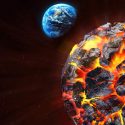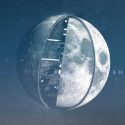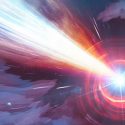We visit a lot of planets here on WHAT IF, but K2-141b is the most extreme one yet. Are you ready to jump on board this one-way space shuttle? If you’d rather stay safely Earthbound, I want you to take a look up at the night sky and find the constellation of Aquarius. Right there. Now imagine traveling 202 light-years in that direction, and that’s where you’d find the hell planet.
What’s that stuff falling from the sky? Why is this planet so different from Earth? How did it get that name?
Lava planets are exoplanets. They’re so close to their host stars that parts of the planets’ surfaces have melted, and their atmospheres are made of mineral vapor. And K2-141b, or the hell planet as we’re calling it, is one of the most extreme lava planets discovered. But it’s not just immensely hot. It’s also exceedingly cold.
There are two sides to the Hell Planet. The day side always faces the orange dwarf star that the planet orbits. Since it’s so close to its star, the unrelenting light creates temperatures of up to 3,000°C (5,400°F).
But the other side of the planet couldn’t be more different. Dwelling in constant darkness, the night side of K2-141b can get as cold as -200°C (-328°F). Why?
The Hell Planet is gravitationally locked to its star because it’s so close. Now that you’re here, you have two options. You can either view the planet from a safe distance or get closer to the action. You want to get closer, you say? Well, alright, here goes.
Since your space shuttle would burn up in the intense temperature of the dayside, you’d have to land on the night side. After putting on your high-tech spacesuit, you take a step out onto the planet’s surface.
You’ll need to keep your distance this time. As I was saying, I forgot to tell you that the Hell Planet rains rocks. The hot side of the planet is so extreme that magma can evaporate. That’s why the atmosphere is toxic. It’s made of sodium, silicon monoxide, and silicon dioxide, not the nitrogen and oxygen we breathe on Earth.
Supersonic winds carry this mineral vapor over to the planet’s cold side, where it rains down as quartz pebbles and falls into a magma ocean. This magma ocean is about 100 km (62 mi) deep, and it eventually flows to the hot side, where it evaporates back into the atmosphere. It’s sort of like the water cycle on Earth, but deadlier. It’s also not as stable.
The magma ocean on the cold side of the planet is slower, and scientists predict that this will cause the mineral composition to change over time. So the surface and the atmosphere will also change.
All rocky planets, including Earth, began as molten planets that rapidly cooled and solidified. Studying the Hell Planet could provide scientists with better insights into how Earth formed. So the Hell Planet may not always be so hellish.
I hope you like it here, because it would take 7,514,400 years to travel to K2-141b. So this would be a one-way trip. You wouldn’t have enough resources to make it back to Earth.
Sources
- “Modelling the atmosphere of lava planet K2-141b: implications for low- and high-resolution spectroscopy”. academic.oup.com
- “We’Ve Found Oceans Of Molten Lava And ‘Rocky Rain’ On The Most Extreme Planet Yet, Say Scientists”. Carter, Jamie. 2021. Forbes.
- “Meet the hell planet with a magma ocean and rocky rain”. Anderson, Paul. 2021. earthsky.org.
- “CNN – Breaking News, Latest News And Videos”. 2021. lite.cnn.com.
- “Scientists discover bizarre hell planet where it rains rocks and oceans are made of lava”. 2020. cbsnews.com.
- “Scientists Grow Nearly Defect Free High Quality Graphene From Tea Tree Extract”. Klokus, Alex. 2015. Futurism.



























